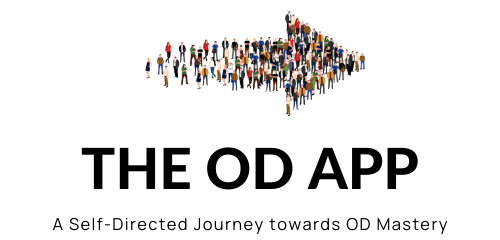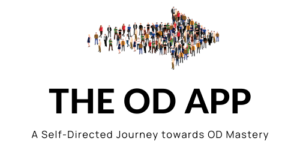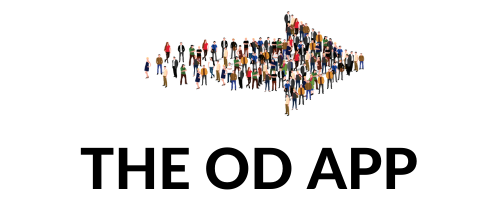Part I – My personal journey with Human Interaction Laboratories (HI Labs)
At 32, I found ‘my tribe’ – NTL Institute for Applied Behavioral Sciences, a community of academicians and practitioners who actually believed that psychologically healthy individuals could be empowered to create socially just and compassionate organizations and societies. They offered what was, at the time, a unique kind of human relations training program called the Human Interaction Laboratory – or HI Lab for short.
I experienced my first HI Lab in Bethel, Maine, in 1972 and, like so many others, found it to be a life-transforming event. Twelve strangers of different ethnicities, races and religions, ranging in age from our 20s to our 70s, formed what was called a ‘T-Group’ (The T stood for training, I found out later). We sat in a circle on the floor from 9 a.m. until noon, 1:30 to 3:30 p.m., and again from 7 to 9 p.m. Monday to Friday (for two weeks) and talked about what we were thinking and feeling, how we experienced what others in the group said and did, and what was happening in our group.
Our facilitator was an experienced NTL T-Group Trainer and psychiatrist, from San Francisco, who would drop in observations from time to time that helped us see things from a different perspective. I came away from that experience with a far deeper awareness of my true thoughts and feelings in most situations, with an understanding of how I could only be responsible for what went on inside of me and not what went on inside of others, with a willingness and ability to give honest, caring feedback, with clarity, about what I wanted to create in my personal relationships, and with a life-long passion for T-Group work and a commitment to learning how to become the best HI Lab Trainer I could possibly be.
Eventually, I was invited to become a professional member of NTL Institute and have spent over 35 years working on that commitment. Over the years, I have had the opportunity to work with and learn from many of my NTL colleagues on NTL HI Lab staffs; to Chair a team that redesigned our HI Lab programs and developed an HI Lab Manual; to serve as the Dean of various training-of-trainers programs; and, over the last few years, to serve as the lead designer and the Dean of NTL’s current eight-month programme, Transforming Through T-Groups: The Facilitator’s Journey, that combines online and onsite learning for those who want to develop as T-Group Trainers.
Part II – What Is a HI Lab?
A HI Lab, as NTL currently offers the programme, consists of five days of two types of program activities: T-Groups and Community Learning Sessions. As described above, a T-Group is comprised of a small group of 8–14 people who have come together for a period of time to learn more about themselves and their interactions with others in present time (‘the here and now’) by:
- Engaging in an experience-based learning environment focused on what they are thinking and feeling in the moment; how what they say and do affects others in the group; and how what other groups members say and do affects them
- Giving and receiving feedback to each other about the impact on them of what is said and done in terms of their thoughts and feelings;
- Assessing if their actions and behaviors are having the impact on others that they want to have … and, if not, trying out different behaviors if they choose to do so; and
- Observing how group members act in terms of how people take on different roles, how decisions get made, how norms develop, how power gets used, etc.,
so that they can understand how these dynamics and processes operate in all groups and help provide effective group leadership to accomplish the group’s work – both in the T-Group and in their ‘back-home’ groups.
Community Learning Sessions usually are offered for approximately an hour each day, during which participants are exposed to various cognitive inputs – e.g., the Johari Window, cognitive reframing, interpersonal communication and feedback skills, group stages and development, conflict management – that help them understand more about group process and provide them with skills they can use to participate more effectively in their T-Group sessions. An emphasis on inclusion, equity, and justice is woven into all community learning sessions as well.
Part III – What are HI Lab Competencies?
NTL is currently in the process of updating the competency framework that is used in developing qualified staff trainers for its HI Labs, and assessing staff performance to acknowledge that NTL is now offering a virtual version of the HI Lab. Currently, there are four competency areas that were developed for onsite programs only. These four competency areas are described in detail below.
Competency Area 1: T-Group Facilitation
The specific competencies included in this area are:
- Demonstrating the ability to diagnose and intervene effectively at individual, interpersonal, and group levels of system
- Demonstrating the ability to anticipate and plan for emerging T-Group dynamics and development
- Providing well-timed, effective interventions to help group members become more aware of their own patterns of behaviour
- Helping participants stay focused on their thoughts, feelings and behaviours in the ‘here and now’ environment of a T-Group
- Attending to verbal and non-verbal cues of T-Group members
- Modeling effective conflict management behavior helps group members learn to manage conflict effectively
- Demonstrating the skills involved in effective Use of Self, including awareness of the impact of one’s own behavior on group members, and the ability to adjust behavior if appropriate
- Supporting T-Group members in working on their personal learning goals
- Managing personal and professional boundaries effectively
Competency Area 2: Awareness and Management of Diversity Dynamics
The specific competencies included in this area are:
- Demonstrating awareness of the social identity groups in which one was socialized and recognizes which of these social identity groups have culturally dominant group status and which have been culturally subordinated
- Acknowledging and being accountable for one’s own biases, prejudices, and sensitivities related to cultural/social identity groups at local and group levels
- Demonstrating understanding of the inescapable reality that one interacts with and is perceived by others, simultaneously, at both the individual/interpersonal and identity group/intergroup levels of system
- Demonstrating the ability to distinguish and help others to distinguish between individual prejudice and institutional/societal forms of oppression
- Tracking and describing diversity, inclusion, and social justice dynamics in ways that create a positive learning environment and help to address ‘isms’ in learning communities
- Tracking and describing behaviours that exclude or disempower members of subordinated groups; articulates the difference between intent, behavior, and impact when this is relevant
- Having a guiding vision of one’s own role in working with diversity, inclusion, and social justice dynamics at different levels of system
- Demonstrating commitment to life-long learning, growth and development related to Diversity, Inclusion, Social Justice (DISJ) theory and practice, and to recognizing and addressing gaps in one’s own DISJ personal and professional development
Competency Area 3: Experiential Learning Design and Delivery
The specific competencies included in this area are:
- Demonstrating knowledge about subject matter, adult learning principles, and experiential learning cycle
- Designing effective experiential learning modules to support participants’ learning in T-Groups
- Demonstrating dynamic and effective presentation skills
- Using various learning media effectively
- Listening well, and being able to summarize and respond succinctly to questions and comments
- Managing group discussions effectively
- Attending to group energy and learning needs; being flexible and able to adjust the design, learning methods, and one’s own training style to meet group interests and needs
- Working collaboratively as a member of the lab/design team staff
Competency Area 4: Awareness, Prevention and Response to Distress Reactions
The specific competencies included in this area are:
- Demonstrating the ability to create structures and processes that help participants experience safety in unfamiliar learning situations, while still helping them understand that they need to experience discomfort in order to learn
- Demonstrating an understanding of what to be aware of from a clinical perspective, at each stage of group development, and of preventive actions that will help avoid or minimize participants’ distress reactions
- Encouraging participants to establish and articulate personal boundaries, while still supporting them to take reasonable risks in service of their learning
- Respecting (and ensuring that other group members respect) the personal boundaries established by individuals in the group
- Attending to verbal and nonverbal cues of T-Group participants and intervening appropriately
- Recognizing early indications of potential distress reactions, and alerting the Dean and other staff about concerns related to individual participants’ distress levels in a timely manner
- Recognizing when professional clinical guidance is needed to help address a participant’s distress
- Taking appropriate action to support a participant who is experiencing a clinical incident, while still attending to the needs of the larger group
- Helping group members articulate and learn from their own reactions to a clinical incident
Part IV – What are some resources to help develop these competencies?
There are several books and articles that are particularly helpful with respect to understanding the development and dynamics involved in T-Groups and the training of T-Group facilitators. Many of them were written before the beginning of the 21st century, starting in the 1960s and 70s when T-Groups first became popular, so there are sections and references that are somewhat outdated. However, there is still a great deal of useful information to be garnered from some of these resources, including:
T-Group Theory and Laboratory Method: Innovations in Re-Education, Leland Bradford, Jack Gibb, and Ken Benne, 1964.
The Small Group Trainer’s Survival Guide, Birge Reichard, Christiane Siewers, and Paul Rodenhauser, 1992.
“T-Groups for Organizational Effectiveness”, Harvard Business Review, 42(2), pp. 60–74, Chris Argyris, Harvard Business School, 1964.
Modern Theory and Method in Group Training, William Dyer, Brigham Young University, 1978.
Matt Minahan and Robert Crosby, “The Classic T-Group”, also available as Chapter 25 in the 4th edition of Practicing Organization Development: Leading Transformation and Change, 2016.
There are also various training programs available for those who want to develop their skills as T-Group Facilitators, including:
- The NTL Institute for Applied Behavioral Sciences, Washington, DC: T-Group programs for the general public and a facilitator training program
- Stanford Graduate Business School, Stanford, California: T-Group programs for the general public and facilitator training programs
- Crosby and Associates, Wilmington, Delaware and Seattle, Washington: T-Group programs in organizational settings
- The Center for Emotional Intelligence and Human Relations Skills (EQ-HR Center): T-Group programs for leaders of faith-based organizations across the US
- The Austrian Society for Group Dynamics and Organisational Consulting (ÖGGO): T-Group programs and workshops in a number of European locations
- The Indian Society for Applied Behavioral Science (ISABS): basic and advanced T-Groups and professional development programs for practitioners
Note: The resources listed in this section, many of which the author has used in her work, were abstracted from a more extensive list available in a very informative online newsletter by Ed Batista, which can be accessed at: https://www.edbatista.com/2018/06/a-brief-history-of-t-groups.html
He not only provides more extensive resources, but also discusses a brief history of T-Groups, the logistics and pedagogy involved, his personal experience over many years with the Stanford T-Group program, and other interesting information. This is another highly recommended resource.




